
http://www.iaeme.com/IJM/index.as 1 editor@iaeme.com
International Journal of Management (IJM)
Volume 8, Issue 4, July– August 2017, pp.1–7, Article ID: IJM_08_04_001
Available online at
http://www.iaeme.com/ijm/issues.asp?JType=IJM&VType=8&IType=4
Journal Impact Factor (2016): 8.1920 (Calculated by GISI) www.jifactor.com
ISSN Print: 0976-6502 and ISSN Online: 0976-6510
© IAEME Publication
WOMEN ENTREPRENEURSHIP IN
DEVELOPING COUNTRIES
Dr. Ruchi Tripathi
Assistant Professor,
Institute of Management Studies, Noida, India
Vinay Pratap Singh
Associate Professor, Bharat Institute of Technology, Meerut, India
ABSTRACT
India is a developing economy, enjoying the youngest youth population of the world
Woman constitutes the family, which leads to society and Nation. Social and economic
development of women is necessary for overall economic development of any society or
a country. Entrepreneurship is the state of mind which every woman has in her but has
not been capitalized in India in way in which it should be. Due to change in environment,
now people are more comfortable to accept leading role of women in our society, though
there are some exceptions.
But if we analyze the country’s contribution in area of entrepreneurship, it is very
little. Entrepreneurship leads in generating employment and utility products and
services for the society and economy. This entrepreneurship deficiency in the country is
also the major cause of unemployment. In the era of industrialization, liberalization and
globalization, most of the world’s developed countries are enjoying the benefits of
Innovation through contribution of women as Entrepreneurs. Our increasing
dependency on service sector has created many entrepreneurial opportunities
especially for women where they can excel their skills with maintaining balance in their
life.
The aim of this paper is to focus on contribution of women as entrepreneurs and
their role in economic development and is based on the secondry data.
Key words: Entrepreneurship, Economic Development, Women Entrepreneurs
Cite this Article: Dr. Ruchi Tripathi and Vinay Pratap Singh, Women Entrepreneurship
In Developing Countries. International Journal of Management, 8 (4), 2017, pp. 1–7.
http://www.iaeme.com/ijm/issues.asp?JType=IJM&VType=8&IType=4

Women Entrepreneurship In Developing Countries
http://www.iaeme.com/IJM/index.as 2 editor@iaeme.com
1. INTRODUCTION
In recent years, the rate of new business formation by women has significantly outpaced the
rate of new business formation by men across all ethnic groups in the USA. Similar trends are
found across the developing world. However, women still own and manage significantly fewer
businesses than men. The explanation for this phenomenon, the behavior of female
entrepreneurs in terms of traits, motivations, and success rates, and their gender-related
distinctiveness are complex and multifaceted. Despite a growing literature we still need more
research on female entrepreneurship—particularly in developing countries where we are seeing
a growing number of initiatives aimed at promoting entrepreneurship and empowering women
in the process. The latter tendency reflects a generally growing interest in female
entrepreneurship in developing countries, which, in turn, is due to greater interest in the role
played by entrepreneurship in the economic development process. Women have been assigned
a special role not only because they stand to benefit from entrepreneurship being the poorer and
more discriminated against gender, but also because they are seen as a critical driver of
entrepreneurship in light of their unique role in the household and the rise in female-headed
households across the developing world.
Entrepreneurship refers to the act of setting up a new business or reviving an existing
business so as to take advantages from new opportunities. Thus, entrepreneurs shape the
economy by creating new wealth and new jobs and by inventing new products and services.
However, an insight study reveals that it is not about making money, having the greatest ideas,
knowing the best sales pitch, applying the best marketing strategy. It is in reality an attitude to
create something new and an activity which creates value in the entire social eco-system. It is
the psyche makeup of a person. It is a state of mind, which develops naturally, based on his/
her surrounding and experiences, which makes him/ her think about life and career in a given
way.
The women have achieved immense development in their state of mind. With increase in
dependency on service sector, many entrepreneurial opportunities especially for women have
been created where they can excel their skills with maintaining balance in their life.
Accordingly, during the last two decades, increasing numbers of Indian women have entered
the field of entrepreneurship and also they are gradually changing the face of business of today,
both literally and figuratively. But still they have not capitalized their potential in India the way
it should be.
The role of women entrepreneurs in the process of economic development has been
recognized form nineties in various parts of the world. Today, in the world of business, women
entrepreneurship has become an essential movement in many countries and has been accepted
in all areas of working. The United Nations report has also concluded that economic
development is closely related to the advancement of women. In nations where women have
advanced, economic growth has usually been steady. By contrast, in countries where women
have been restricted, the economy has been stagnant.
2. SOME FACTS OF RESEARCH ON FEMALE ENTREPRENEURSHIP
IN ADVANCED ECONOMIES
What are the facts we have learned from the last 30 years of research on female self-
employment and new business creation? We now know that significantly fewer women than
men own and manage businesses worldwide. This could be because women fail more often than
men or because fewer women than men start businesses to begin with, or both. Thus, at least a
portion of the difference between genders must be due to the fact that fewer women than men
start businesses. Evidence to date suggests that a variety of reasons contribute to explaining
observed differences in entrepreneurial behavior across genders, and that such differences have

Dr. Ruchi Tripathi and Vinay Pratap Singh
http://www.iaeme.com/IJM/index.as 3 editor@iaeme.com
significant implications at the macroeconomic level. Perhaps women and men have different
socioeconomic characteristics and, if we were to correct for factors such as education, wealth,
family and work status, those differences would disappear. Indeed, quite a bit of empirical
evidence shows that such differences exist. Also, women tend to possess fewer years of
experience then men and tend to concentrate in different sectors. In addition, the propensity of
women to start a business may differ from that of men for cultural reasons such as
discrimination.
The businesses owned and managed by men and women are also different. We now know
that women's businesses tend to be smaller and to grow less than those owned by men. Also,
women's businesses tend to be less profitable than those of men and to generate lower sales
turnover than men, even in same industry comparisons. Minniti (2009, see further reading)
provides a comprehensive and up-to-date review of the literature on women entrepreneurs and
their businesses.
3. FEMALE ENTREPRENEURS IN DEVELOPING COUNTRIES
Recent evidence shows that prevalence rates of female entrepreneurship tend to be relatively
higher in developing then in developed countries. This has traditionally been explained by the
fact that in developing economies women face higher barriers to entry in the formal labor
market and have to resort to entrepreneurship as a way out of unemployment and, often, out of
poverty. Research on female entrepreneurship in Latin America and the Caribbean, for
example, found very high rates of female entrepreneurship in the poorest countries of the
region—up to 35 per cent in Peru—and notes that only 13 per cent of women entrepreneurs in
the region indicated that they expected their firm to grow over the following five years. In many
cases opportunities and incentives are unfavorable for women to begin businesses, even when
they have the abilities and knowledge.
It is found that variables associated with entrepreneurial decisions tend to be the same for
men and women and across countries, regardless of level of development, and that gender
differences in entrepreneurial behavior tend to be remarkably stable across countries. However,
the intensity with which each of these variables influences individuals does vary significantly
across gender and across countries depending on their level of development. As a result, on
average, participation rates for men tend to be 50 per cent higher than those of women creating
a 'gender gap' in entrepreneurship.
Larger gender gaps in start-up activity are found in middle-income countries, whereas they
tend to be narrower in lower-income countries probably because many women start businesses
out of necessity. Surprisingly, women in poorer countries tend to be more self-confident about
their abilities (skills and knowledge) to become entrepreneurs and less afraid of failure
compared to women in middle- and high-income countries—notwithstanding subjective and
possibly biased perceptions about self-confidence, fear of failure, and existence of opportunities
or significant and systematically associated determinants of the gender gap across all countries.
Women in developing countries, like their counterparts in more developed ones, rely more
than men on extended families which, in many rural settings are often their only or major social
network. This is often constraining since women's marriage status, and the assets and incomes
brought to their marriages, emerge as important determinants of their entrepreneurial decisions.
Married women with young children are more likely to enter entrepreneurship than waged
labor, and are more likely to be entrepreneurs than non-married women—although they are also
more likely to quit a business voluntarily.

Women Entrepreneurship In Developing Countries
http://www.iaeme.com/IJM/index.as 4 editor@iaeme.com
4. ECONOMIC DEVELOPMENT
Economic development of a country is usually determined by the growth of per capita income.
However, other than per capita income, in the essence of modern economic growth, we also
know that, on average, it might be measured with other fundamental changes that occur. Such
changes are, among other things, the way people live, as they are more likely to move to cities
and work in factories, no longer in farms. That happens as the household industries tend to
decline and replaced by larger enterprises. Other indicators that we might see are the tendency
of the families to reduce the number of children, so the birth rate begins to fall. Development
could be seen also from the point of view of employment progress, capital, business volume
and consumption. In other words, economic development can be seen in the structural change
of the society, and implies more than just economic growth. Gillis, Perkins, Roemer and
Snodgrass (Economics of Development, 1996) stated that a key element in economic
development is that the people of the country must be major participants in the process that
brought about these changes in structure. Participation in the process of development implies
participation of those benefits. If growth only benefits a tiny, wealthy minority, whether
domestic or foreign, it is not development.
5. WOMEN’S ROLE IN ECONOMIC CONTRIBUTION
In light of the explanation about economic development cited above, I would like to cite
Naisbitt' and Aburdene’s statement that the progress of women’s role in several sectors,
including business, could be seen in some phenomenon mentioned hereunder:
1. In line with the improvement of women’s education, women are no longer the minority in fields
that were dominated by men in the past.
2. The field of information technology creates many opportunities for the development of
women’s talents in this specific field.
3. The increase in the number of women who lead their own business, especially the ones in small
and medium scale enterprises.
4. Women’s leadership is able to gain high loyalty due to the fact that they are the ones that are
able to conduct clean, ethical, transparent and honest management.
6. REASONS FOR WOMEN OPTING FOR ENTREPRENEURSHIP
Self determination, expectation for recognition, self esteem and career goal are the key drivers
for taking up entrepreneurship by women (Moore & Buttner, 1997).
Sometimes, women chose such career path for discovering their inner potential, caliber in
order to achieve self satisfaction. It can also provide a mean to make best use of their leisure
hours.
However, dismal economic conditions of the women arising out of unemployment in the
family and divorce can compel women into entrepreneurial activities
7. OBSTACLES FOR WOMEN ENTREPRENEURSHIP
The entrepreneurial process is same for men and women. Successful men and women
entrepreneurs undergo similar motivations and thus achieve success in largely same way under
similar challenges. They are also found to have access to fund from the same sources. The same
condition both men and women can be successful entrepreneurs. (Cohoon et.al. 2010).
However, in practice most of the upcoming women entrepreneurs face problems that are of
different dimensions and magnitudes than that faced by their male counterparts. These
problems, generally, prevent these women entrepreneurs from realizing their potential as
entrepreneurs. The major hurdles that the women face during starting and running a company

Dr. Ruchi Tripathi and Vinay Pratap Singh
http://www.iaeme.com/IJM/index.as 5 editor@iaeme.com
generally come from financing and balancing of life. The balancing of life is caused due to lack
of family support for the women.
The other hindering external factors include gender discrimination, inaccessibility to
information, training opportunities, infrastructure etc. Some internal factors like risk aversion
by women, lack of confidence, lack of vision of strategic leader etc. can also create obstacles
for the women entrepreneurship development.
8. MEASURES TO REMOVE THE OBSTACLES
The elimination of obstacles for women entrepreneurship requires a major change in traditional
attitudes and mindsets of people in society rather than being limited to only creation of
opportunities for women. Hence, it is imperative to design programmes that will address to
attitudinal changes, training, supportive services. The basic requirement in development of
women entrepreneurship is to make aware the women regarding her existence, her unique
identity and her contribution towards the economic growth and development of country.
The basic instinct of entrepreneurship should be tried to be reaped into the minds of the
women from their childhood. This could be achieved by carefully designing the curriculum that
will impart the basic knowledge along with its practical implication regarding management
(financial, legal etc.) of an enterprise.
Adopting a structured skill training package can pave the way for development of women
entrepreneurship.
Such programmes can train, motivate and assist the upcoming women entrepreneurship in
achieving their ultimate goals. Various schemes like the World Bank sponsored programmes
can be undertaken for such purposes. The course design should focus on imparting input on
profitability, marketability and practical management lessons. Besides, there should be
consideration in helping the women entrepreneurs in balancing their family life and work life.
As a special concern, computer illiterate women can be trained on Information Technology to
take the advantage of new technology and automation.
The established and successful women entrepreneurs can act as advisors for the upcoming
women entrepreneurs. The initiatives taken from these well established entrepreneurs for
having interaction with such upcoming women entrepreneurs can be proved to be beneficial in
terms of boosting their morale and confidence. It may result in more active involvement of
women entrepreneurs in their enterprises.
Infrastructure set up plays a vital role for any enterprise. Government can set some priorities
for women entrepreneurs for allocation of industrial plots, sheds and other amenities. However,
precautionary measures should be undertaken to avoid the misuse of such facility by the men
in the name of the women.
Even in today’s era of modernization the women entrepreneurs depend on males of their
family for marketing activities. This is simply because they lack the skill and confidence for
undertaking such activities. Women development corporations should come forward to help the
women entrepreneurs in arranging frequent exhibitions and setting up marketing outlets to
provide space for the display of products or advertisement about services made by women.



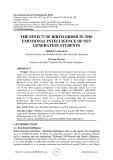
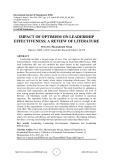
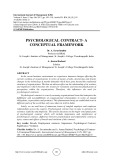

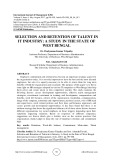

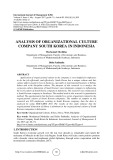
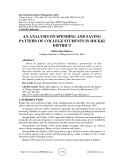


![Câu hỏi ôn tập Tâm lý học quản lý [chuẩn nhất]](https://cdn.tailieu.vn/images/document/thumbnail/2025/20251125/hathunguyen04er@gmail.com/135x160/25191764124376.jpg)
![Cẩm nang chăm sóc và nuôi dạy trẻ tăng động giảm chú ý [chuẩn nhất]](https://cdn.tailieu.vn/images/document/thumbnail/2025/20251118/kimphuong1001/135x160/4241763431998.jpg)


![Sổ tay Hướng dẫn tự chăm sóc trầm cảm [chuẩn nhất]](https://cdn.tailieu.vn/images/document/thumbnail/2025/20251029/kimphuong1001/135x160/3711761720335.jpg)
![Đề cương Tâm lý học xã hội [chuẩn nhất]](https://cdn.tailieu.vn/images/document/thumbnail/2025/20251028/c.dat0606@gmail.com/135x160/99271761707421.jpg)
![Câu hỏi ôn thi Nhập môn khoa học nhận thức [chuẩn nhất]](https://cdn.tailieu.vn/images/document/thumbnail/2025/20251021/aduc03712@gmail.com/135x160/48471761019872.jpg)

![Đề cương môn Tâm lý học sinh tiểu học [chuẩn nhất]](https://cdn.tailieu.vn/images/document/thumbnail/2025/20251007/kimphuong1001/135x160/51781759830425.jpg)



![Tâm lí học lứa tuổi và sư phạm ở tiểu học: Bài thuyết trình [chuẩn nhất]](https://cdn.tailieu.vn/images/document/thumbnail/2025/20250918/vuhoaithuong14@gmail.com/135x160/90941758161117.jpg)
